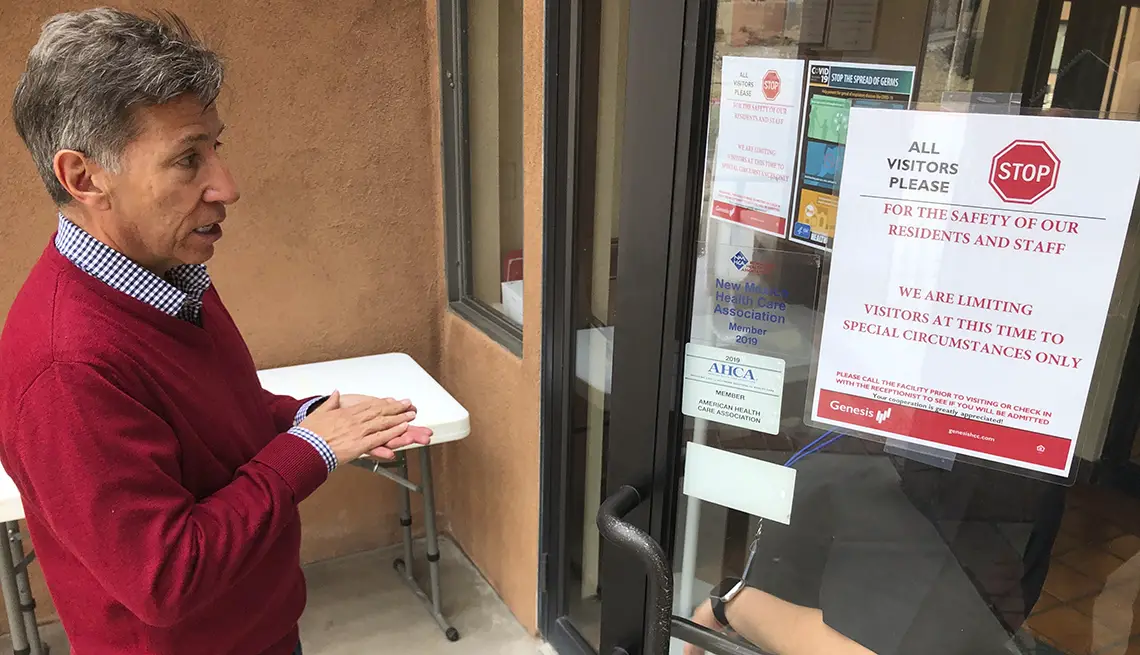
Home health providers have been on the front lines of the COVID-19 crisis since its outset, yet a primary concern remains being left behind by legislators, whether that’s on a state or federal level.
Reimbursement for telehealth services is still on the forefront of everyone’s minds. But there are less-covered issues that haunt providers as they continue to deal with the ongoing public health emergency, too.
There are still severe restrictions on access to patients in facilities, for example. Additionally, the existing nursing shortage has only grown worse.
The main concerns moving forward will continue to be taking care of patients and dealing with the challenges of COVID-19 and the Patient Driven Groupings Model (PDGM). But advocating on behalf of the home health industry cannot stop in the meantime, Dr. Steve Landers, the president and CEO of Visiting Nurse Association Health Group Inc., said on a Wednesday webinar hosted by Blacktree Healthcare Consulting.
“I think we’ve got to stay really front and center on [telehealth] and not get left behind,” Landers said. “Because other people are going to be providing telehealth into the home and into the community. That’s going to be a part of the delivery system going forward. And I think we in [home health] should be the leaders.”
VNA Health Group is one of the largest independent, nonprofit providers of home-based health services in New Jersey, northeast Ohio and southeast Florida. Headquartered in New Jersey — a part of an area the virus wreaked havoc on early — the provider had already cared for nearly 650 COVID-19 patients by the end of May, Landers told Home Health Care News.
Amid the pandemic, hospitals have been granted the ability to bill for outpatient remote services in the home, yet home health providers are still not able to do so.
There is also a mounting concern over new, restrictive immigration laws that could affect the nursing workforce in home health, Landers said.
“It’s not been a hot topic, but I’d love to see more done for the nursing workforce,” Landers said. “Our nursing schools are turning away tens of thousands of qualified applicants every year because they don’t have capacity to take them on. And on the other end, we’re losing more nurses every year than we’re putting in, … and now we’ve restricted immigration. We’ve got a big nursing challenge, and I personally would like to see some government intervention on expanding training for nurses.”
An additional hurdle in the past has been that nursing programs had prioritized institutional settings, which led students to believe that hospitals and specifically emergency rooms were the be-all and end-all.
Industry insiders are hoping that stigma changes with care moving further into the home during COVID-19 and better home health education becoming more ubiquitous.
“[There was always] this mindset that you had to have all this acute care experience before you can be successful in the home,” Mary Gibbons Myers, president and CEO of Johns Hopkins Home Care Group and president of Home & Community-Based Services for Johns Hopkins Health System, told HHCN in May. “But what we’ve been thinking over the last couple years is that we really need to go upstream and look at the institutional or the educational setting, making sure that the curriculum is changed so that instead of focusing people on critical care and hospital settings, [we’re looking] at the entire continuum of care … .”
One measure that was applauded at the beginning of COVID-19 in some circles, but has since become problematic, is the isolation of home health workers from institutional settings over the last five months.
That’s put the patients at an even further risk at times, Brent Korte, chief home care officer at EvergreenHealth, also said on the webinar.
“[We’ve been trying to] fight back to make sure that we have access to assisted living facilities and skilled nursing facilities,” Korte said.
EvergreenHealth was one of the first providers in the entire country to be hit by COVID-19 in the U.S., way back in February. Based just outside of Seattle, it is one of the largest home health and hospice providers in the Pacific Northwest.
The not-for-profit provides about 250,000 visits per year and is affiliated with a local hospital system.
A few months ago, when EvergreenHealth was blocked from seeing a patient to check on wounds, she eventually developed a stage-4 tunneling cubitus ulcer that led to her death.
“There can obviously be a very negative impact from not being able to see patients,” Korte said.
The cutoff from facilities has also had other negative impacts as well, such as staggering declines in mental health for isolated seniors unable to see their families.
New legislation decisions — or lack thereof — are bound to be a topic throughout the COVID-19 crisis, including whenever a new stimulus package is agreed upon. For home health providers, each one could mean the world.
The post Assisted Living Facilities Still Restricting Home Health Providers appeared first on Home Health Care News.
